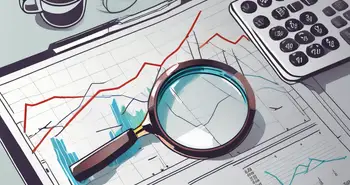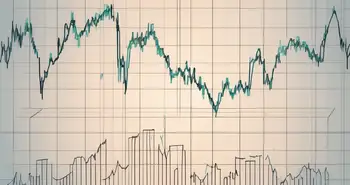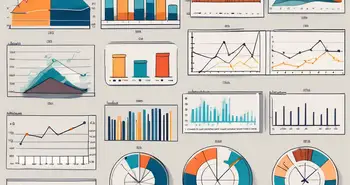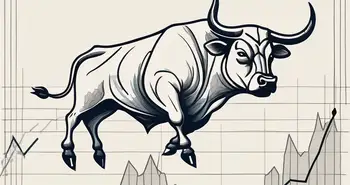The Hindenburg Omen: A Deep Dive into Market Fear Signals
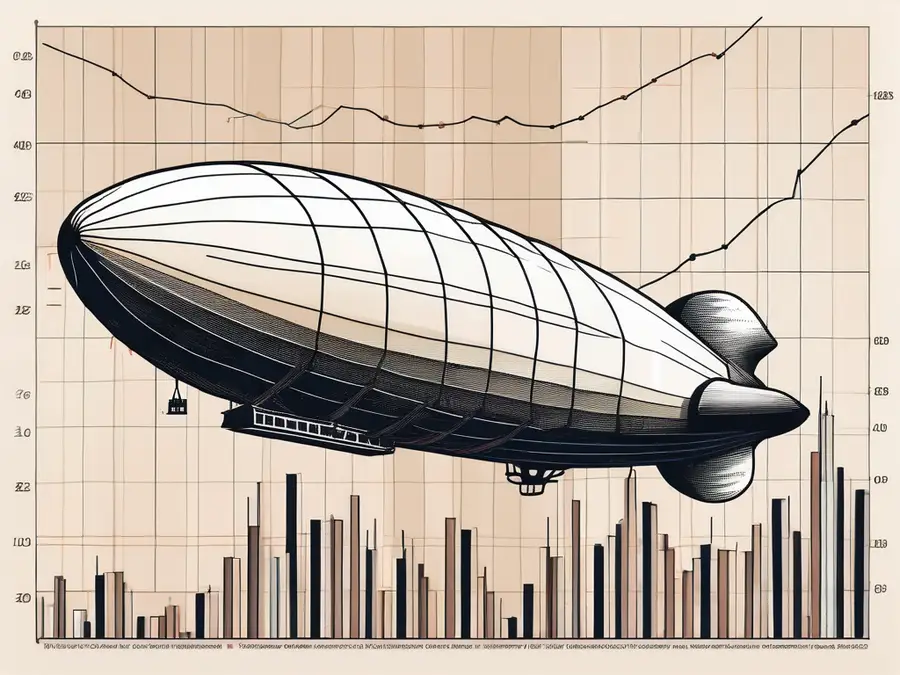
As an expert in market indicators and trends, I'm excited to delve into one of the most intriguing signals in the financial world: the Hindenburg Omen. This technical indicator is often discussed in relation to market crashes and is named after a tragic historical event. In this article, we will explore the mechanics of the Hindenburg Omen, assess its relevance in modern markets, and provide practical insights for investors.
What is the Hindenburg Omen?
The Hindenburg Omen, introduced by Jim Miekka in the 1990s, is designed to detect market conditions that may lead to significant downturns. Named after the 1937 Hindenburg disaster, the Omen triggers when specific criteria are met, signaling underlying market instability. The goal of the indicator is to give traders a heads-up about a potential market crash, allowing them to take precautionary measures.
To generate a Hindenburg Omen signal, multiple conditions must be met simultaneously, including:
- A high number of stocks reaching new 52-week highs and lows on the same day.
- A significant divergence between advancing and declining stocks.
- Negative market breadth, often measured by the McClellan Oscillator (MCO).
When these conditions are met, the Omen suggests that underlying market internals may be deteriorating, warning investors to proceed with caution.

Origins of the Hindenburg Omen
The Hindenburg Omen draws its name from the catastrophic crash of the German airship “Hindenburg” in 1937, which resulted in the deaths of 36 people. This disaster became a symbol of unexpected failure, inspiring Jim Miekka to develop a market indicator that could signal impending stock market disasters with similar urgency.
Miekka, a mathematical market analyst, used historical data to develop the Omen, hoping to provide early warnings of market crashes. However, the irony is that while his indicator was good at reading past conditions, it has struggled to predict modern market downturns consistently.
How the Hindenburg Omen Works
The Omen’s signal is generated when several conditions align:
- New 52-Week Highs and Lows: A minimum of 2.2% of stocks on a market index (like the NYSE) must simultaneously hit new 52-week highs and lows. This signals market indecision.
- Ratio of Highs to Lows: The number of 52-week highs should not exceed twice the number of 52-week lows.
- Market Uptrend: The market index must be in an uptrend, confirmed by either a 50-day moving average or a 10-week moving average.
- McClellan Oscillator (MCO): The MCO, a market sentiment indicator, must turn negative.
Once these conditions are met, the Hindenburg Omen becomes active for 30 trading days. If the McClellan Oscillator remains negative during this period, the signal is confirmed. It’s important to note that additional signals within the 30-day window should be ignored.
The Predictive Power: Fact or Fiction?
Despite its fascinating premise, the Hindenburg Omen’s reliability has been debated. While some claim that the Omen predicted events like the 1987 market crash, it has also produced many false alarms, particularly in the past decade. This underscores the importance of not relying solely on the Omen to make trading decisions.
The Omen is a tool for flagging potential volatility, but it should always be used in conjunction with other forms of analysis. Its real value lies in warning traders to reassess their positions, not to panic or overreact.
Why Has the Omen Been Less Effective Recently?
Since the Omen’s creation, market dynamics have shifted, making it less reliable in predicting crashes. Several factors contribute to this:
- The Rise of ETFs: Exchange-Traded Funds have impacted market breadth, making it harder for the Omen to distinguish between normal and abnormal market conditions.
- Algorithmic and High-Frequency Trading: These strategies have increased market volatility, leading to rapid market movements that do not align with the patterns the Omen was designed to detect.
- Post-2008 Financial Reforms: Regulatory changes and central bank policies have altered market behavior, making historical patterns less predictive of future crashes.
Investor Reactions and Market Sentiment
One of the most significant impacts of the Hindenburg Omen is its psychological effect. When the signal is triggered, it often creates fear and uncertainty in the market, sometimes causing investors to sell prematurely. This fear can lead to increased volatility, with some market participants reacting emotionally rather than strategically.
It is important for investors to maintain perspective. The Omen can indicate heightened market risk, but overreacting to it can result in missed opportunities and poor long-term performance.
While it’s crucial to stay level-headed and avoid panic selling, having access to the right tools and platforms can make a big difference in managing risk. On Morpher.com, you can trade without fees, take short positions, and access leverage up to 10x—all while staying agile in volatile market conditions. Sign up today and strengthen your investment strategy.
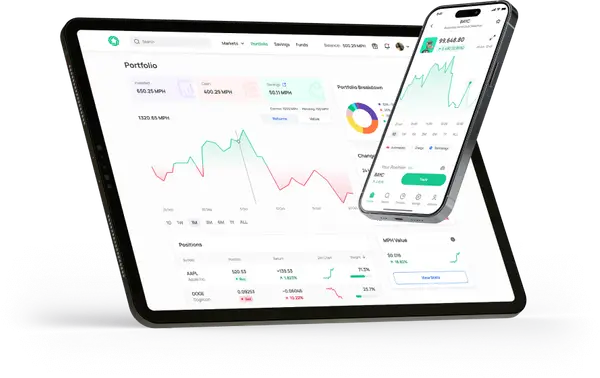
Criticisms and Controversies Surrounding the Hindenburg Omen
The Hindenburg Omen has been criticized for its high rate of false positives, and skeptics argue that it generates more noise than actionable insight. Its criteria are so complex and rare that they often trigger unnecessary alarm. For this reason, the Omen should never be used in isolation—it’s just one piece of the larger puzzle.
The Hindenburg Omen: A Practical Guide for Investors
While the Hindenburg Omen can be a useful signal, it must be part of a well-rounded investment strategy. Here are some practical steps for investors:
- Do Not Act in Isolation: The Omen is a warning sign, not a crystal ball. Always combine its signals with other market indicators, such as moving averages, the Relative Strength Index (RSI), and fundamental analysis.
- Understand Its Limitations: The Omen’s track record is mixed. Weigh its signals against broader market contexts before making any major moves.
- Stay Calm: Panic selling can hurt your long-term strategy. Instead, use the Omen as an opportunity to reassess your portfolio and make informed decisions based on multiple factors.
How to Interpret the Hindenburg Omen
Interpreting the Hindenburg Omen requires a holistic approach. Use it in conjunction with other indicators like the McClellan Oscillator, market sentiment analysis, and broader economic data to form a more complete picture of market conditions. Relying on a single indicator can lead to rash decisions and unnecessary losses.
Is the Hindenburg Omen Still Relevant?
The Hindenburg Omen’s relevance has diminished due to changes in modern markets, including the prevalence of ETFs, algorithmic trading, and regulatory reforms. However, it remains a useful tool when combined with other forms of technical and fundamental analysis. Like many indicators, it can provide valuable insights when used responsibly, but it should never be the sole basis for investment decisions.
FAQ
What is the Hindenburg Omen?
The Hindenburg Omen is a technical analysis signal designed to detect market conditions that may lead to a significant downturn. It examines specific criteria, such as the number of stocks reaching new highs and lows, to identify potential market instability.
Does the Hindenburg Omen guarantee a market crash?
No, the Hindenburg Omen does not guarantee a market crash. It serves as a warning sign that market conditions may be deteriorating and volatility may increase. It is important to consider other factors and indicators when making investment decisions.
Should I base investment decisions solely on the Hindenburg Omen?
No, it is not advisable to base investment decisions solely on the Hindenburg Omen. As with any market indicator, it should be used in conjunction with other analysis methods, such as fundamental analysis, market sentiment, and other technical indicators.
What is the role of the Hindenburg Omen in investment strategies?
The Hindenburg Omen can provide valuable insights into market conditions. However, it should not be the sole basis for investment strategies. It is best used as part of a diversified approach that considers multiple indicators and extensive research.
Is the Hindenburg Omen a reliable indicator?
The reliability of the Hindenburg Omen is a subject of debate among market analysts. While it has coincided with significant market declines in the past, it has also generated false signals. It is recommended to use the Hindenburg Omen in conjunction with other indicators to enhance its effectiveness.
With a thorough understanding of the Hindenburg Omen and a comprehensive approach to analyzing market trends, investors can navigate the intricate world of finance with confidence and informed decision-making.
As you consider the complexities of market indicators like the Hindenburg Omen, it's clear that having the right tools and platforms can make a significant difference in your trading strategy. Morpher.com stands out as a revolutionary trading platform that embraces the power of blockchain technology to offer a unique, fee-free trading experience across a multitude of asset classes. With features like fractional investing, short selling without interest fees, and up to 10x leverage, Morpher is designed to empower investors like you to navigate the markets with confidence. Take advantage of Morpher's innovative approach to trading and ensure you're well-equipped to act on sophisticated market signals. Sign Up and Get Your Free Sign Up Bonus today, and join the future of investing with Morpher.

Disclaimer: All investments involve risk, and the past performance of a security, industry, sector, market, financial product, trading strategy, or individual’s trading does not guarantee future results or returns. Investors are fully responsible for any investment decisions they make. Such decisions should be based solely on an evaluation of their financial circumstances, investment objectives, risk tolerance, and liquidity needs. This post does not constitute investment advice.

Painless trading for everyone
Hundreds of markets all in one place - Apple, Bitcoin, Gold, Watches, NFTs, Sneakers and so much more.

Painless trading for everyone
Hundreds of markets all in one place - Apple, Bitcoin, Gold, Watches, NFTs, Sneakers and so much more.


